#Garden Mint
Text

Thoroughly Mentholated
Watercolor On Artboard
2022, 12"x 16"
Garden Mint, Mentha
Jadeite and Sugilite
#art#nature#artists on tumblr#flowers#floral#watercolor#painting#minimalism#herbs#garden#mint#garden mint#spearmint#sugilite#artist#artwork#jade#jadeite#artists#botany#plants
73 notes
·
View notes
Text
Tomato and Feta Semolina Salad (Vegetarian)

We're back on the road, heading Southwards to a little French Riviera holiday! Except this time, we're driving there (when I say we, I mean Mum and Jules, whom we are picking up en route in Dijon!) But before we even reach Burgundy, we'll have a little picnic (one of my favourite things on a long drive), and this Tomato and Feta Semolina Salad is exactly the sort of dishes that travels well and nicely! Happy Saturday!
Ingredients (serves 2):
1 1/2 cup Lemon Semolina
a dozen leaves fresh garden mint
a small bunch fresh Garden Chervil
a small bunch fresh Garden Chives
1/2 cup ripe Cherry Tomatoes, rinsed
a small Green Onion
2 tablespoons olive oil
60 grams/2 ounces Feta Cheese
Spoon Lemon Semolina into a medium bowl.
Finely chop fresh mint and Garden Chervil and Garden Chives, and add to the bowl.
Halve Cherry Tomatoes, and add to the bowl as well.
Finely chop Green Onion, and add to the bowl. Drizzle in olive oil, and give a good but gentle stir, to mix well.
Finally, crumble in Feta Cheese, and gently toss once more.
If bringing on a picnic, spoon Tomato and Feta Semolina Salad into a container, close tightly, and chill in the refregirator at least a few hours (to overnight) before leaving (or serving)!
#Recipe#Food#Tomato and Feta Semolina Salad#Tomato and Feta Semolina Salad recipe#Semolina Salad#Semolina Salad recipe#Semolina#Lemon Semolina#Rice Barley Bulgur and Wheat Berry#Mint#Fresh Mint#Garden Mint#Chervil#Fresh Chervil#Garden Chervil#Tomatoes#Cherry Tomatoes#Cherry Tomato Harvest#Garden Cherry Tomatoes#Green Onion#Garden Green Onion#Olive Oil#Feta#Feta Cheese#Salad#Salad recipe#Salad and Side#Vegetarian Salad#Vegetarian#Vegetarian recipe
4 notes
·
View notes
Text

#plants#indoor plants#meirl#mint#outdoor plants#garden#gardening#backyard#house plant#plantlife#plantbased
48K notes
·
View notes
Text

reblog to share some mint with your followers. just don't let it escape containment, okay?
#mint#peppermint#herbs#plants#transparent png#transparent background#plantblr#mint is to gardens what glitter is to craft areas#if it escapes containment it gets fucking everywhere and it’s impossible to get rid of
440 notes
·
View notes
Text
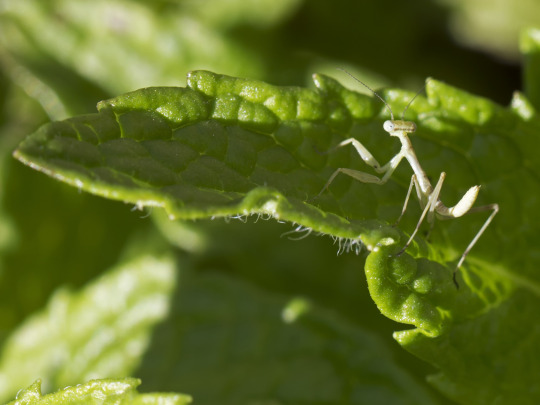


It's the most wonderful time of the year - baby praying mantis season!
I haven't posted any new photos in a month or so for reasons, not least that it's been fun to look through old pictures and give them another chance at love, or views, or whatever. But yesterday I spotted the first praying mantis babies of the season, and that calls for a change of pace. Shoot, I think it should be a holiday.
The earliest I have ever seen mantis babies here is April 14. So, April 21 is right on time. I found at least five individuals, and they are so tiny and well-camouflaged that it certainly means there are lots more I haven't seen.
Hooray, and happy Baby Mantis Season!
Cochise County, Arizona, April 2024.
#insect#praying mantis#babies#macro#photographers on tumblr#textless#amadee ricketts#arizona#green#leaves#mint#dill#camouflage#finger#in the yard#in the garden#spring#april#tiny#cute#they are little killing machines#but so cute though
158 notes
·
View notes
Text
You can actually grow mint in the ground. It takes a bit of a trick, but you can definitely do it.
But first, a personal lesson on why people tell you not to plant mint in the ground (and yes, I knew better, but life happens and I didn't actually intentionally plant this):

This is my apple mint patch, which started by accidently dropping some minty debris and thinking, what's the worst that could happen? This. This is what can happen.
As you can see, it has engulfed potatoes, rhubarb, strawberries, and raspberries. It has received no care. It has out competed the invasive species that was there (bindweed), and replaced it. It's about 4 feet tall in the center, 5 feet wide, and 7 feet long. I really should do something about it this year.
And here's my other mint patch which is lest than 10 feet away, started at the same time, looking a little rough because I pulled some out to give a friend the other day (well, and it's shaded, and that corner of the yard is pretty weedy- but still! It gets the idea across!)

Take a closer look at the soil between the pots:
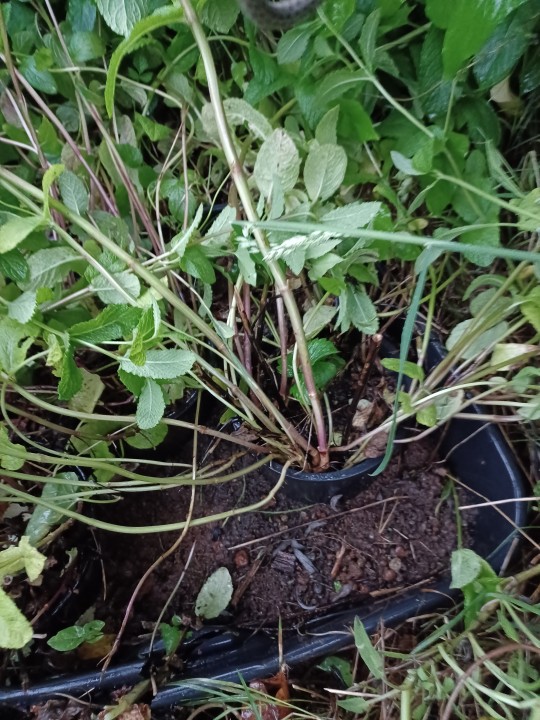
Notice something? Something like the mint not escaping? Yeah, there's bindweed that's gotten in, but ignore that for now*.
Mint.
In the ground.
Contained.
I also know someone who planted theirs in a chimney flue bricks, and it too, has not escaped- even after 5 years.
Why is this important? Well, because mint likes it moist and pots dry out quickly (which means that if i had to keep an eye on it, it would have died 4 years ago).
But if you half bury the pot, the roots (but not the runners!) go down and out and can use the moisture in the soil. I actually lifted these pots up a while ago to check, and they had sent roots down but not runners- and it has been multiple years.
Meaning I haven't had to water this mint. Not even during the 100+ weather days, and we have a summer dry period where we don't get any rain for months.
Now, truly, I was a bit concerned and not trusting of my own idea when I started this, so let me draw a picture of what this system actually is, for folks like me who think it's too good to be true and want some extra insurance:
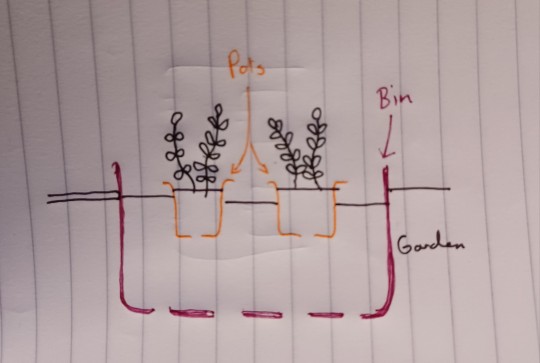
So, as you can see, I didn't put the pot straight into the ground- I actually mostly buried a bin (that had holes in the bottom for drainage), and planted mint pots into that. I have not seen any mint escaping from the pots, but that's there, just in case.
*bindweed/perennial morning glory is awful. If you see it starting in your garden, remove it without hesitancy or mercy. Get every little bit of root. It's harder to get rid of than English ivy or Himalayan blackberry.
#adhd gardening#for folks who don't know mint is the glitter of the gardening world#gardenblr#gardening#my plants#grow your own#mint#did i make this whole post because someone told me not to plant mint in the ground even if it was in a pot? yes. yes i did#I'm probably going to redo this whole post in a couple weeks after I've cleaned up this area#because yikes
3K notes
·
View notes
Text
'Tism won again! 🎉
Re:that post about invasive mints and the addition about outcompeting them with related plants, you can look up native lamiaceae species if you're still worried about replacing one invasive species with another! If you live in the USA, uswildflowers.com lets you search by state, and if you wanna narrow your search results even more, look up [plant family] native to your ecoregion!

There are different-level ecoregional maps for each state too--

--and some species only occur in the wild within unique subregions. For example, there's a Brazos mint, or rattlesnake flower, that only grows in sandy soil within the post oak belt in Texas, and the post oak savannahs only show up within the east central Texas plains on a level IV-inclusive map.
And I dunno about anyone else, but there's something special about meeting some of your more exclusive neighbors.
#mint#lamiaceae#invasive species#native plants#ecoregion#environmentalism#gardening#media#website#tldr#etc
357 notes
·
View notes
Text


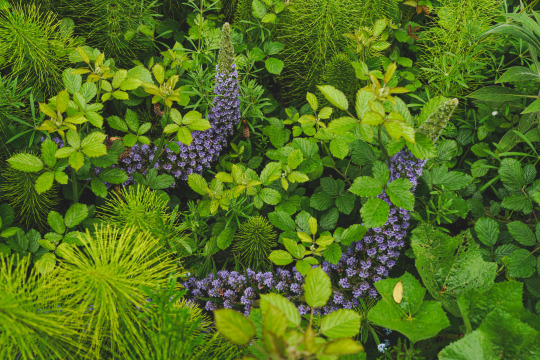
#garden#flowers#green#purple#pride of madeira#equisetum#mint#botanical#botanical garden#photography#lensblr#photographers of tumblr#color photography#landscape#garden path#soft things#sonya7r4#sonya7riv#photographers on tumblr#original photography#flora#digital photography#natureculture#nature#art#original content#original photography blog
285 notes
·
View notes
Text

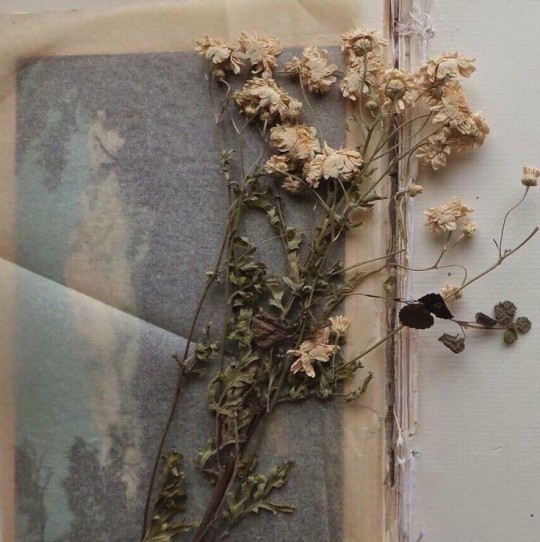
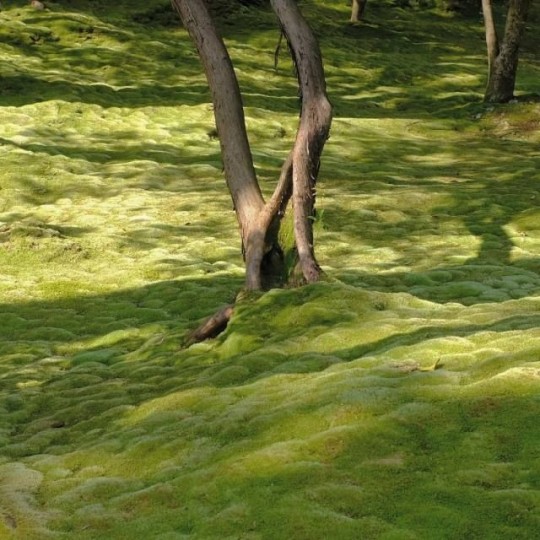
✵ . ✵ . ✵
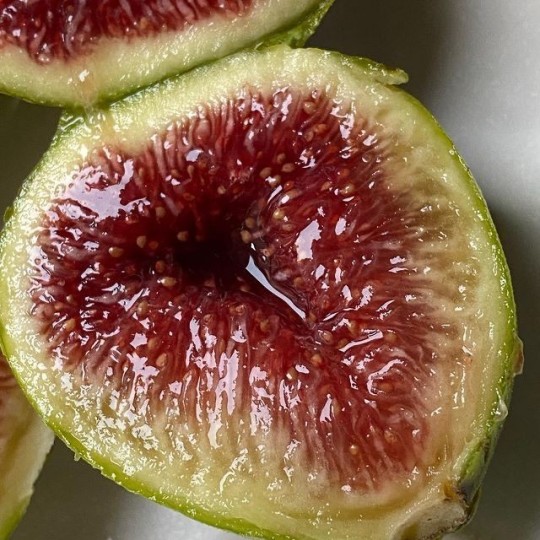
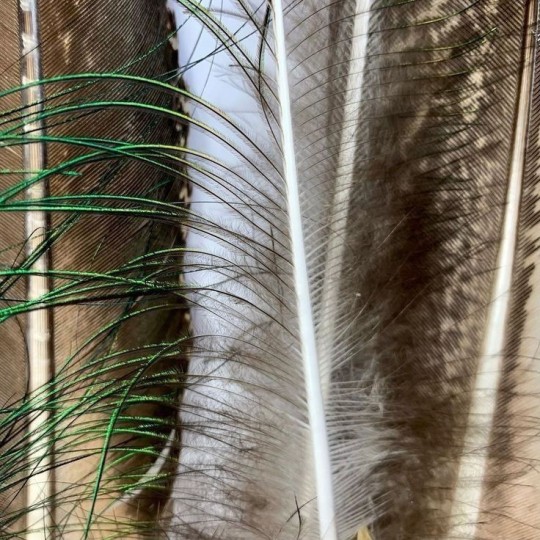

✵ . ✵ . ✵



#alternative moodboard#garden core#kawaii core#moodboard bts#pink core#moodboard dark#random bios#taehyung#aesthetic dark#green aesthetic#yoongi instagram#yoongi icons#bts yoongi#yoongi#suga icons#suga moodboard#min suga#bts suga#suga#mint#min yoogni
208 notes
·
View notes
Text

Brave Mint Dragon.
Prints: https://sixthleafcloverstore.com/products/mint-dragon
#dragon#sixthleafclover#digitalart#dragonartist#house plant#plants#garden#mint leaves#cute dragon#cuteanimal#cute art#kawaiiartwork#kawaiiartist#cute aesthetic#cutecore#kawaiicore#cute finds#so cute#adorable#smol#cute things
102 notes
·
View notes
Text
21 notes
·
View notes
Text

Thoroughly Mentholated
Watercolor On Artboard
2022, 12"x 16"
Garden Mint, Mentha
Jadeite and Sugilite
#art#nature#artists on tumblr#flowers#floral#watercolor#painting#minimalism#herbs#garden#mint#garden mint#spearmint#sugilite#artist#artwork#jade#jadeite#artists#botany#plants
116 notes
·
View notes
Text
Mint and Mugwort Tea

This Mint and Mugwort Tea makes a calming, soothing beverage which can be a relief on the liver after a heavy meal. Mugwort* could be an acquired taste to some, but I do like its sharp, herbaceous fragrance, and I find a cuppa, a really nice break, indeed!
*it is, apparently, not recommended during the early stages of pregnancy.
Ingredients (serves 1):
about 1 1/2 cup water
half a dozen large leaves fresh mint
2 small sprigs fresh common mugwort (Artemisia vulgaris)
1 teaspoon pure (local) honey
Put the kettle on.
Finely chop mint leaves and mugwort, trimming off the tougher part of the stem beforehand.
Spoon chopped mint and mugwort into a small teapot. Once the water is boiling, pour over the chopped mint and mugwort. Cover with the lid and a tea-cosy, and infuse, 10 to 15 minutes.
Stir in honey. Pour Mint and Mugwort Tea into the cup through a strainer, stirring until honey is melted.
Drink Mint and Mugwort Tea hot.
#Recipe#Drink#Drink recipe#Mint and Mugwort Tea#Mint and Mugwort Tea recipe#Mint#Fresh Mint#Garden Mint#Mugwort#Common Mugwort#Fresh Mugwort#Artemisia vulgaris#Honey#Pure Honey#Water#Boiling Water#Tea#Herbal Tea#Hot Drink#Hot Drink recipe#Hot Drink and Beverage#Hot Beverage#Hot Beverage recipe#Quick recipe#Easy recipe#5 Ingredients or Less
8 notes
·
View notes
Text

Marching band practice is in session!
#chao#chao garden#chao world#sonic#sth#sonic adventure 2#sonic adventure 2 battle#hero chao#dark chao#bright chao#two tone chao#marching band#sega#sonicteam#Mint#Fauna#Toots#Pepper#Spinch-San
57 notes
·
View notes
Text
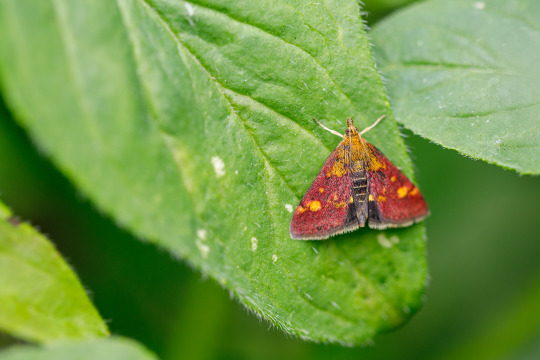
Mint Moth
A velvety red mint moth on a marjoram leaf in the garden.
#30dayswild#canon#canonuk#fauna#garden#insect#insects#invertebrate#invertebrates#minibeast#minibeasts#mint moth#moth#moths#nature#outdoors#pyrausta aurata#spring#springwatch#wildlife
63 notes
·
View notes
Text
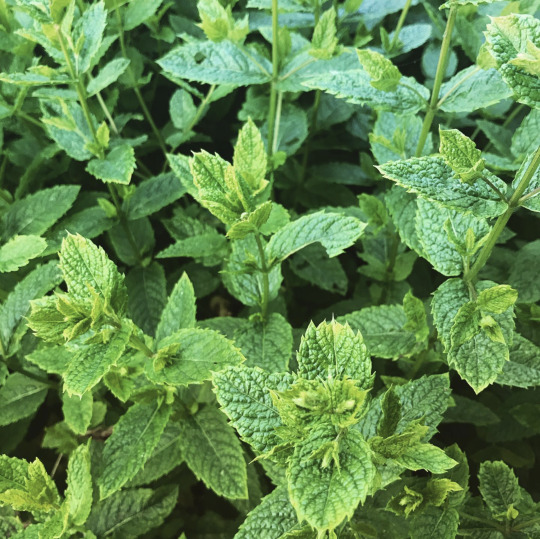
Meet the original source of the flavouring know from toothpaste, mouthwash, and chewing gum - the spearmint plant (Mentha spicata). This plant thrives in shady spots in the garden during the summer. The distinctive taste and scent comes from the naturally occurring chemical R-(-)-carvone. The taste of genuine spearmint is far richer and more complex than its artificially flavoured version, and spearmint plants have been bred to have many different shades of flavour such as “chocolate mint” and “pineapple mint”. It’s an excellent tea herb and it combines well with many other fresh herbs from the garden. There is medical research supporting spearmint’s herbal medicine uses for digestive system issues and antimicrobial properties.
#katia plant scientist#botany#plant biology#plant science#plants#gardening#herbs#herbal medicine#mint#mint leaves#spearmint#mentha spicata#mentha#stomach issues#medicinal herbs#chemistry#shade plants#plant identification#plant facts#herbal tea#organic gardening#grow your own food#homesteading
53 notes
·
View notes